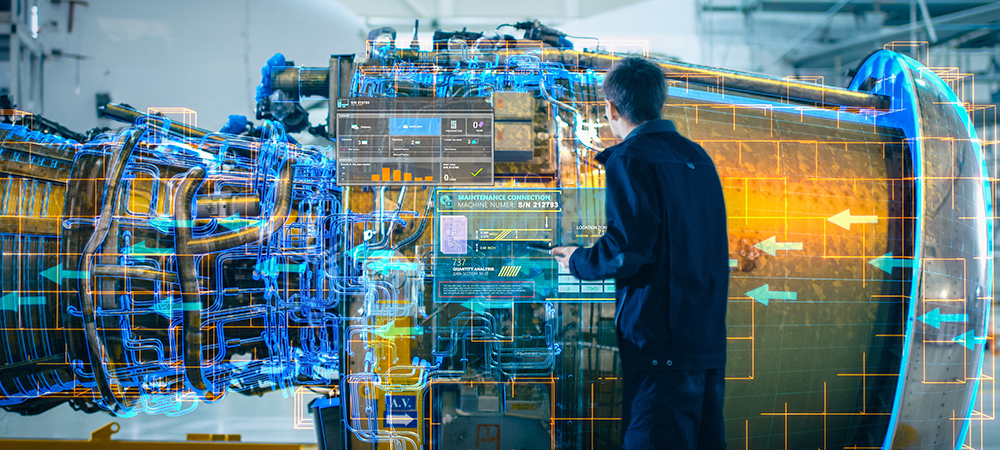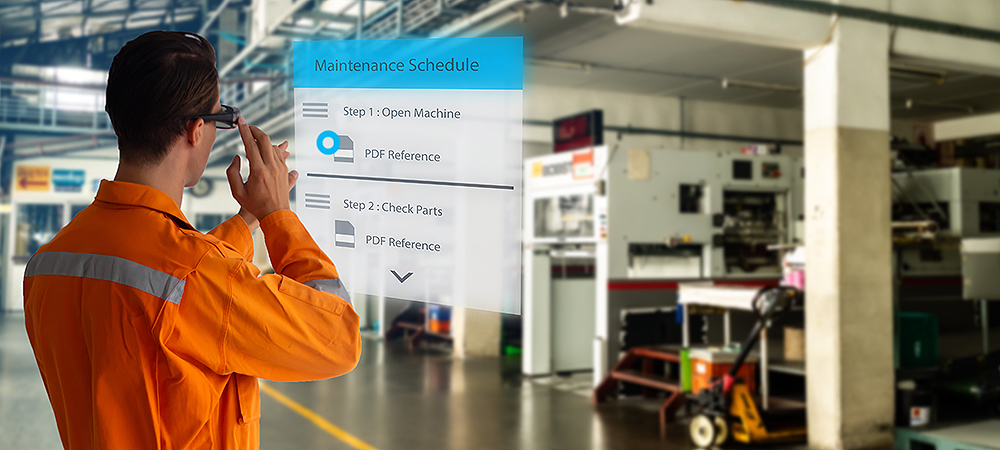By 2025, over 60% of global manufacturing companies are expected to implement Industry 4.0 solutions, reflecting rapid digital transformation across industries aiming for smarter, more efficient operations, while the use of digital twins is being driven by integration of IoT devices, AI, and real-time data analytics. Executives from Cloud Box, AVEVA, PlanRadar, share their insights.
Digital twin usage varies from industry to industry, business to business, and each organisation make its own unique case for adopting them. As technologies move forwards, there are many ways to combine new competencies to enhance the ideology of a digital twin further.
“Organisations reap benefits from combined data and information sources, improving decision-making and collaboration across teams. AVEVA has customers who have recognised this opportunity over the years such as ADNOC, SHELL, Gwinnett, Wood, or BASF,” says Simon Bennett, Director Innovation and Incubation, AVEVA.
“Enterprises globally are embracing Industry 4.0, making digital twin technology essential. It optimizes physical assets, processes, or systems by simulating, monitoring, and analysing them in a virtual environment, reducing downtime. Digital twins leverage IoT devices, data analytics, and cloud computing to create efficient platforms,” says Avinash Gujje, Practice Head, Cloud Box Technologies.
AI and ML algorithms analyse vast data, recognise patterns, and optimise performance. Innovations like blockchain for decentralised ledgers and 5G for reduced latency further enhance digital twins, driving greater efficiency and innovation.
By 2025, over 60% of global manufacturing companies are expected to implement Industry 4.0 solutions, reflecting the rapid digital transformation across industries aiming for smarter, more efficient operations. As Industry 4.0 practices become more common, the use of digital twins is being primarily driven by the integration of IoT devices, AI, and real-time data analytics.
“The growing advancements in this space are improving responsiveness and reducing latency. We are also seeing that new developments in AI are enhancing predictive maintenance, enabling proactive management of equipment and resources, which leads to greater efficiency and fewer operational disruptions,” says Ibrahim Imam, Co-Founder and CEO, MENA + APAC, PlanRadar.

Return on investment
“Digital twin technology offers numerous benefits for enterprises. It allows the creation of virtual replicas of physical assets, enabling real-time monitoring to identify and resolve bottlenecks,” explains Avinash Gujje, Practice Head, Cloud Box Technologies.
Predictive maintenance is another advantage, where data from IoT devices is analysed by ML algorithms to predict potential failures, helping to prevent costly disruptions, such as in container ships subjected to forces that are susceptible to breaking down ending up in downtime and eventually losses.
Additionally, digital twins provides decision-makers with a comprehensive view of processes and assets, offering valuable insights for making well-informed decisions.
By leveraging the power of digital twins, organisations can unlock new opportunities and achieve higher levels of efficiency. By creating a virtual replica of physical assets or processes, businesses can monitor and analyse data to identify trends, patterns, and anomalies. With accurate and up-to-date information at their fingertips, decision-makers can optimise operations and drive better outcomes.
By leveraging real-time data and advanced analytics, organisations can uncover bottlenecks, streamline operations, and maximise resource utilisation. The result is improved productivity, reduced costs, and increased competitiveness.
By monitoring assets in real time, organisations can detect potential issues early on and schedule preventative maintenance. This proactive approach helps prevent unexpected breakdowns, reduce unplanned downtime, and extend the lifespan of assets.
“Companies leveraging Industry 4.0 technologies can report up to 30% increase in productivity and 20% reductions in operational costs. Implementing a digital twin offers enterprises the ability to closely monitor and optimise operations with real-time data analysis, leading to more informed decision-making and improved efficiency,” says PlanRadar’s Imam.
Importantly, digital twins also facilitate predictive maintenance, allowing companies to address potential issues before they cause significant disruptions. The ability to simulate different scenarios also aids in planning and resource management, reducing risks and enhancing overall productivity.
“By monitoring assets in real time, organisations can detect potential issues early on and schedule preventative maintenance. This proactive approach helps prevent unexpected breakdowns, reduce unplanned downtime, and extend the lifespan of assets,” says AVEVA’s Bennett.

Challenges and inhibitors
Implementing any technology presents challenges, and digital twins are no exception. Additionally, the industry faces a talent and skill deficit that cannot be overlooked.
“A significant hurdle is the high initial investment, which can deter enterprises from adopting this technology. Upgrading legacy systems to modern ones is both costly and complex, often requiring significant customisation, which further increases expenses. Even if these financial barriers are overcome, interoperability challenges may arise due to the varied range of interfaces and protocols within an IT environment,” explains Cloud Box’s Gujje.
As new technology advances, digital twins are rapidly maturing within functional silos. But these bottom-up efforts will fail to converge towards an integrated digital twin of the business without a clear vision and priorities from the top-down.
“The strategies, priorities, methods and enabling technologies used to create and deploy digital twins are different at various levels of the enterprise value chain. This is one of main reasons why enterprises are finding it difficult to bring it all together as part of their digital transformation journey and roadmap,” says AVEVA’s Bennett.
“Enterprises face a range of potential challenges when implementing digital twins, another of which being the integration of existing legacy systems with new digital technologies. This often involves overcoming technical hurdles related to data compatibility and system interoperability,” says PlanRadar’s Imam.
The implementation process demands a substantial investment of time and resources, including training employees to effectively use and maintain the digital twin. Another challenge is the management of large volumes of data generated by digital twins, requiring robust storage, processing, and analysis capabilities. Ensuring the security of sensitive data is also a critical issue, necessitating stringent cybersecurity measures.

Business and technology expertise
“Businesses need expertise across both IT and business domains to successfully create a digital twin project,” says Cloud Box’s Gujje.
For instance, they must understand IoT sensors, including how to deploy and manage them, establish connectivity between nodes, and use edge computing for instant communication with reduced latency.
On the business side, essential skills include domain expertise, knowledge of regulatory compliance, project management, the ability to form and manage cross-functional teams, road mapping, and resource allocation, among others. These skills collectively contribute to the success of a digital twin initiative for any enterprise.
“With the right teams supporting them, digital twins are powerful tools for delivering complete projects more efficiently, centralising engineering information and using it throughout an asset’s entire lifecycle,” says AVEVA’s Bennett.
There are some simple steps that businesses can take to implement a successful digital twin. Understand what you need to achieve to improve business performance, both short-term aims and long-term goals. Audit the solutions that you currently have and identify areas that you need to improve.
One of the benefits of today’s solutions is that there is no one and done approach. Choose technology that scales easily enabling you to add additional tools as required and scale to more users and assets if needed. Find a trusted partner who will be best placed to guide you through the choice of solutions to build a digital twin that aligns with your organisational needs.
“In 2024, nearly 50% of large industrial companies are expected to use digital twins, enhancing their product development cycles and operational efficiency,” says PlanRadar’s Imam.
To effectively use digital twins, businesses need a mix of technical and business skills. IT professionals should understand data management, system integration, and AI-driven analytics. Cybersecurity is also crucial to protect the integrity of the digital twin.
On the business side, leaders need strategic thinking skills and the ability to turn complex data into actionable insights that support business goals. Good communication and collaboration skills are essential for ensuring that teams can work together effectively.

Key takeaways
- Digital twin usage varies and each organisation make its own unique case for adopting them.
- Organisations reap benefits from combined data and information sources, improving decision-making and collaboration across teams.
- In 2024, nearly 50% of large industrial companies are expected to use digital twins.
- By 2025, over 60% of global manufacturing companies are expected to implement Industry 4.0 solutions.
- One of the benefits of today’s solutions is that there is no one and done approach.
- Choose technology that scales easily enabling you to add additional tools as required and scale to more users and assets if needed.
- Usage of digital twins is being primarily driven by the integration of IoT devices, AI, and real-time data analytics.
- Digital twin technology allows the creation of virtual replicas of physical assets, enabling real-time monitoring.
- Digital twins provide decision-makers with a comprehensive view of processes and assets for making well-informed decisions.
- Companies leveraging Industry 4.0 technologies can report up to 30% increases in productivity and 20% reductions in operational costs.
- Implementing a digital twin offers enterprises the ability to closely monitor and optimise their operations with real-time data analysis.
- By monitoring assets in real time, organisations can detect potential issues early on and schedule preventative maintenance.
- A bottom-up efforts will fail to converge towards an integrated digital twin of the business without a clear vision from top-down.
- Enabling technologies used to create and deploy digital twins are different at various levels of the enterprise value chain.
- Enterprises are finding it difficult to bring it all together as part of their digital transformation journey and roadmap.
- Implementation demands a substantial investment of time and resources, including training employees to maintain the digital twin.
- Management of large volumes of data generated by digital twins, requires robust storage, processing, and analysis.
- Security of sensitive data is also a critical issue necessitating stringent cybersecurity measures.
- With the right teams supporting them, digital twins are powerful tools for delivering complete projects more efficiently.




